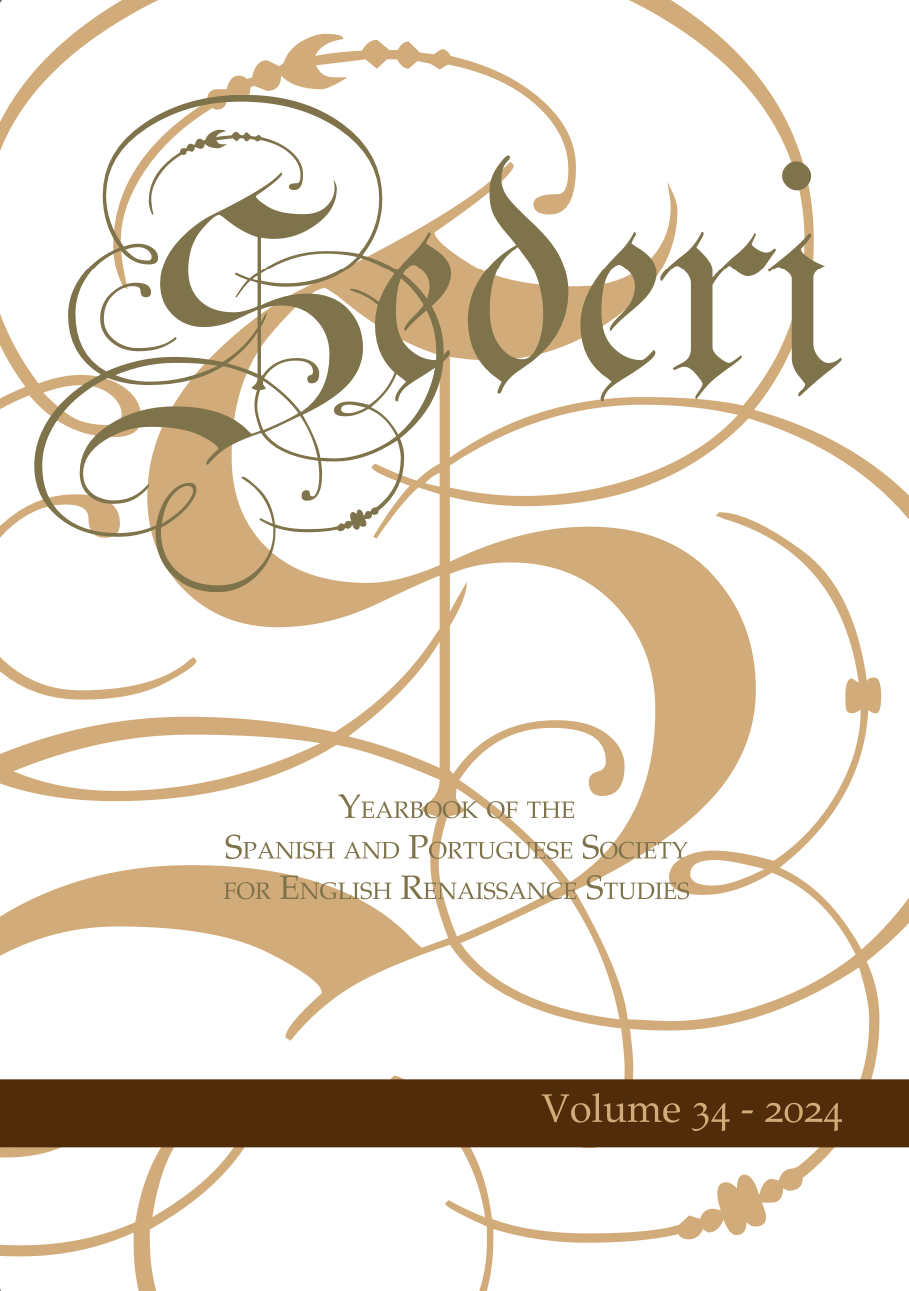Getting Your Letters Wrong
Early Modern Epistolary Writing
DOI:
https://doi.org/10.34136/sederi.2024.1Palavras-chave:
epistolarity, genre, history of the novel, Renaissance fiction, Restoration fictionResumo
Letters have played a central role in the development of various forms of literary culture. This article argues that it is through the tropes of miscarriage, deceit and betrayal that early modern writers and audiences frequently encountered epistolary forms of communication. By looking at various examples from Renaissance and Restoration fiction and literary culture, the article demonstrates that this period was marked by inconsistencies, experimentation and negotiations. Letters at the time provided writers with an opportunity to showcase the flexibility and malleability of language. The letter, indeed, represented the semantic in-betweenness that links factuality and fiction.
Downloads
Downloads
Publicado
Edição
Secção
Licença
The copyright holder of the published contributions is SEDERI.The hardcopy and an open-access version of the journal will be published simultaneously. The issues will be available online in the SEDERI website (http://www.sederi.org/yearbook/) and other repositories that have signed an agreement with SEDERI.
The authors who publish with this journal agree to the following terms:
a) SEDERI retains copyright of the essay.
b) If the author wishes to republish or rewrite the essay for another journal, or include the essay published in SEDERI in their personal repositories, or in any other way, they should contact the editors to obtain permission to do so. This will entail citing SEDERI as the original source and sending the editors a copy of the new version, or the link to the website, in case of online publishing.
The author(s) hereby warrant(s) that:
a) The essay submitted for publication is an original creation and does not infringe any copyright or property right of another journal, author or publisher.
b) The essay submitted for publication has not been previously published, whole or in part, and is not being considered for publication elsewhere.
c) Written permission has been obtained for any material from other sources included in the essay submitted for publication.




